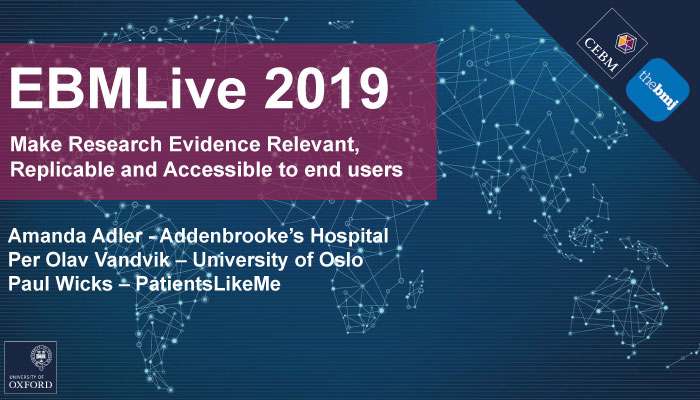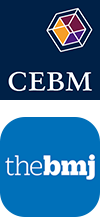
Speaker/s:
Amanda Adler – Addenbrooke’s Hospital



Amanda Adler – Addenbrooke’s Hospital
Amanda Adler – Abstract Coming Soon
Per Olav Vandvik – BMJ Rapid Recommendations disrupting the Evidence Ecosystem, for you and me?
Policy-makers, clinicians, patients and carers struggle hard to navigate and make use of research evidence in what has been labelled a medical misinformation mess. Guidelines and decision aids represent crucial tools to make well-informed decisions in practice but suffer from a host of problems. This talk will highlight major advances in standards, methods, processes and technology put together in what we call a digital and trustworthy evidence ecosystem. Within this evidence ecosystem MAGIC has partnered with BMJ to make research evidence more relevant, trustworthy and accessible to end-users while increasing global efficiency and reducing duplication of work. The BMJ Rapid Recommendations represents a collaborative network of the right people demonstrating the power of co-creation free of vested interests. This approach for international evidence synthesis and guidance creation may represent a disruptive innovation unless organisations get their act together. If research evidence does not result in documented better care and wiser use of health resources we are only half way there, so why not close the loop?
Paul Wicks – “What’s in it for us? Conditional altruism and the social contract of research participation”
While researchers and sponsors decry the challenges of study enrollment, too little attention has been paid to the lived experience of the patients and caregivers who enable evidence generation in medicine. Trial protocols are increasingly burdensome (to the point of being a part-time job) with growing numbers of tests, procedures, and study diaries to complete. Study visits remain geared towards the priorities and needs of the sponsor and institution, with little allowance made for the fact that patients have busy lives and competing responsibilities. As a so-called participants, patients and caregivers are still treated like subjects in that they are denied learning about their condition or the wider trial context as a matter of principle. Once completed, study results are communicated at closed-door meetings with the results published years later behind paywalls. Is it any wonder then that evidence generation remains challenging?
Now is the time to partner with patients to co-produce recruitment materials that appeal to patients, informed consent documents written in plain language, and FAQs that address their concerns. We can empanel patients and caregivers on our protocol design groups to minimize burden and ensure the patient voice is represented in the room. And we can build in continuous feedback at our study sites to ensure that being a study participant feels like being a valued future customer not a blindly altruistic guinea pig. The time is ripe for change that will benefit us all, and patients are eager to help.